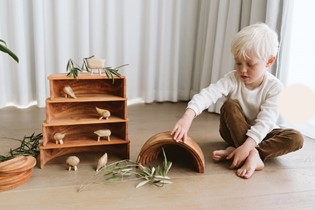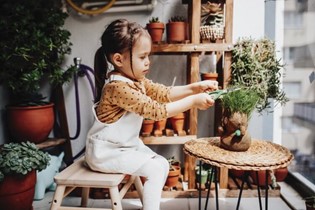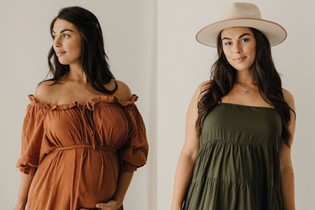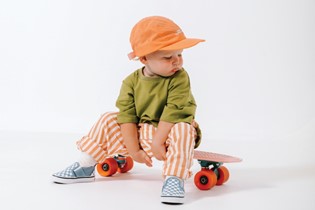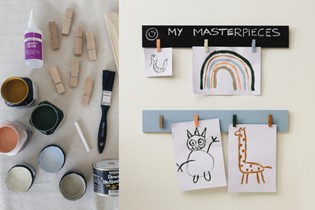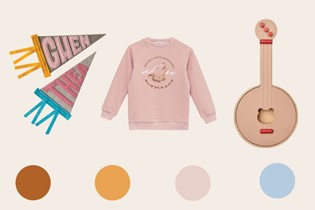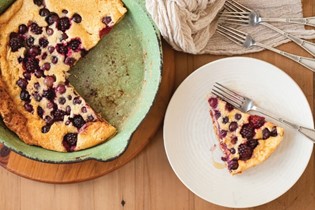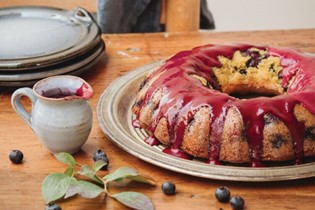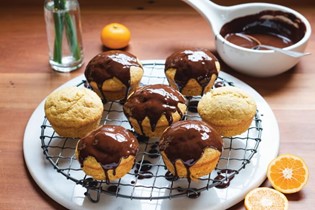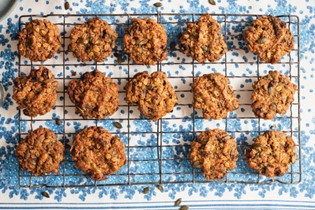A lactation consultant shares the must-haves for breastfeeding

Midwife, lactation consultant and mum of five, Stephanie Callaghan-Armstrong shares her must-haves for your breastfeeding journey.
Congratulations! So you’re having a baby (or hoping to) and perhaps planning to go on the very special journey of breastfeeding your baby. There are so many products and options on the market (not to mention opinions!) claiming to be what you need to successfully breastfeed your baby. So here goes with a guide of what I believe are ‘must haves’ and when you might need them. I’ve also included some ideas of what may be useful extras, what things are more of a wait-and-see, and also a few things I don’t recommend. Disclaimer: This list is just my personal opinion as a health professional (Lead Maternity Care midwife, and lactation consultant) and mum of five (plus two informally adopted beautiful little ones aged 20 months and four weeks, along with their mama). It does also represent a largely baby-friendly World Health Organisation (WHO) code approach to breastfeeding. To make it easier let’s categorise into Prenatal, Pregnancy & Postnatal.
PRENATAL
Nutrition/multivitamins
It’s a good idea to make sure you’re as healthy as possible before pregnancy. Being as fit as you can and prioritising nutrition is a great start. Being pregnant, giving birth and producing breast milk requires a lot from your body. As well as a balanced diet, a pregnancy and breastfeeding multivitamin (usually they’re for both) helps cover the folic acid, iodine and vitamin D supplements recommended. Taken ideally at least three months prior to conception, they often also include iron, calcium, fish oils, probiotics and an array of other vitamins and minerals. In New Zealand, folic acid and iodine are both funded by prescription.
If you start your pregnancy with good iron levels it helps you in the second trimester when haemodilution occurs (when your blood volume increases by another half causing dilution and often a drop in iron levels). Having low iron levels can affect milk production, especially if you experience blood loss giving birth, so best to work on iron intake before and during pregnancy.
Calcium is also important because both in pregnancy and postnatally baby will mobilize calcium from your bones if there isn’t enough in your diet. A head start is the best way to go.
Don’t stress if you’re already pregnant – wherever you’re at is then the best time to start working on your health and diet.

Resources – books/magazines/courses/online research
Before conceiving it’s never too early to start reading and educating yourself about pregnancy and breastfeeding. Understanding the truly phenomenal benefits of breast milk nutrition for your baby helps you to keep going when the going may get tough in those early days.
Pregnancy
Exciting! Now you’re pregnant and it’s really important (especially in the first trimester) to continue to take supplements for optimum health for you and your growing unborn baby. Look at getting extra omega oils for brain development and probiotics for gut health too.
Nursing bras
Your breasts usually increase in size even by several cup sizes during pregnancy so wearing a good supportive bra (or even a nursing bra you can wear later when breastfeeding) will help with comfort levels (you will go up and down sizes so having different bra options is great). Make sure your bras fit comfortably, not too loose or not too tight.
Nursing pads
In pregnancy you will likely start producing colostrum and may even require nursing pads prior to birth. Don’t be alarmed, colostrum is amazing! It’s considered to be liquid gold filled with antibodies and it’s the ultimate nutrition for newborns, tailor made for baby’s needs at the gestation they are born.
Breastfeeding-friendly clothing
Button up shirts, and tops designed especially for feeding allow you to breastfeed comfortably while out and about. It’s a good idea to try and find new-mama feeding outfits before baby arrives as you will most likely need them before you feel up to going shopping. Nice seasonal button up or maternity pjs and slippers are a great investment too as you will live in them, especially in your first weeks postpartum.
Breast pumps
Do you really need a pump before baby comes? It depends. Sometimes a pump is needed in the early days postpartum if supply is an issue or there is some other issue which prevents mum from breastfeeding. In this instance, hiring a hospital grade pump for a week or two would be the best option, which your midwife or Lead Maternity Carer (LMC) can help you organise. Some pumps are useful for increasing your supply, helping relieve engorged breasts, or even to simply collect excess milk (suction pumps). If you’re going back to work and want to introduce baby to a teat early on, I recommend waiting at least four weeks to ensure breastfeeding and milk supply is well established.
If you’re wanting to buy a personal pump do your research because you do get what you pay for. You may find a bargain on a second hand site because many women find they buy expensive pumps and barely use them.
Breastfeeding chair/pillow/foot stool
You may not have much energy for furniture shopping after giving birth, so best to be prepared before baby with your home set up and ready.
Some mums really like having a designated breastfeeding chair. I always had a great couch setup but it needs to be the right height, ideally with a footstool so your knees are parallel with the floor. Breastfeeding on the bed ends up hurting your back so is not recommended around the clock for feeding. You also need lots of pillows. Soft and mouldable ones to tuck around you are great, or a half circle nursing pillow is perfect. They also double as a baby support for after feeds to stabilise them semi upright and later for early sitting up.
Prenatal expressing
I don’t actually recommend that every new mum expresses and stores colostrum before baby is born. Physiologically, in a normal term pregnancy with a natural birth, skin to skin immediately after and early uninterrupted breastfeeding, the body will do what it needs to do. However, it is good to learn how to hand express and to gain confidence that your milk is ready for baby prenatally. Ask your LMC how, or watch some videos for technique.
There are times though when it is a great idea to have extra colostrum stored, ready for baby. If you have gestational diabetes for example, baby will often need extra milk to maintain their blood sugars after birth. Premature or low birth weight (or very large) babies, a baby that needs surgery after being born, those with congenital conditions like low tone and suck may also benefit from having a stash of stored colostrum. Some other reasons could be if you have had a history of low milk supply in a previous pregnancy, PCO syndrome, breast augmentation/reduction or inverted nipples. Your LMC will guide you, but do create a plan with them before the birth and get some syringes ready for hand prenatal expressing. You may also be able to see a lactation consultant before your baby is born, to be prepared.
If possible it’s a great idea to have a breast examination to assess your nipples and evidence of development for milk production. Some families I care for who have higher risk pregnancies are provided prenatal expressing packs by the hospital.
Others purchase syringes in bulk online or from pharmacies. Make sure you name and date (including time) the syringes and freeze at the back of the freezer. Express from 36 weeks gestation (there’s a slight risk of it stimulating labour).
Bottles, teats and milk storage
The WHO code recommends not using bottles, teats and dummies as the best way to establish breastfeeding for baby. Skin to skin contact and latching baby early after birth, and uninterrupted feeding thereafter helps send the message to your brain to supply the perfect amount of breast milk for your baby. Baby suckling teats and dummies can cause nipple confusion and reduce stimulation to the breast.
If breast milk top ups are needed in-between feeds in the very early days of breastfeeding, feeding baby from a soft cup, teaspoon, syringe or sometimes a feedline that attaches to the breast while baby is feeding is the ‘baby friendly’ recommendation. You should never have to navigate this alone, it’s so tricky, so please ask for help from your LMC or a lactation consultant.
If you do need a teat/bottle or that is simply your preference, I always respect a mum’s choice. There are some that are designed to be more like a breast, and I advise to watch their feeding technique to make sure baby doesn’t just suckle at the end of the teat rather than drawing it more into their mouth like they do with your areola. Some babies with congenital needs, such as a cleft palate and lip, may need specialised teats like the Haberman feeder, plus support to breastfeed in different positions for good suction – again a lactation consultant can help with this.
Bottles, teats and dummies are easily available, you can even get them from the supermarket, so there’s not really much need to have some ‘just in case’. It’s better to wait to see if you actually need them first.
Bottles are good for expressed breast milk storage with their volume measurements on the side, but any clean, covered container or even a hot-washed snap lock bag or a covered ice cube tray is fine.

Nipple Shields
Nipple shields are another breastfeeding aid that can have a useful place in some cases. They are used by mums to either stabilise baby on the breast or to use as a barrier for extremely painful nipples. Purchase and use only with professional advice as they can sometimes cause more damage or inhibit milk supply, so expressing is often needed in addition to maintain your milk supply (this happened to me). The hospitals also have nipple shield stock if needed and assessed.
Sterilising
As breast milk isn’t sterile, hot soapy washing of bottles and containers is the most important thing to get all milk off surfaces, however some manufacturers recommend sterilising once a day.
You can boil any non-perishable item for three minutes and it’s officially sterile. There are also sterilizing tablets you add to water as per directions and change the solution every 24 hours (don’t rinse after with un-sterile water – if you want the solution to be off, rinse with boiled water).
Sterilisers come in different shapes and sizes from microwavable ones to actual machines.
I think wait and see what happens. If you had a more infection-vulnerable prem baby or a multiple pregnancy and were needing a lot of bottles, then a sterilizer may help you save time, but usually they end up taking up space in your cupboards or bench. Remember breast milk is filled with antibodies, so baby is less prone to infections and breast milk is safe from developing bacteria for a number of hours in bottles after expressing.
Breast milk warming
Heating expressed breast milk needs to be done gently, never in a microwave as many valuable nutritional and protective properties are destroyed. Placing the bottle in hot water and testing on your wrist (should be warm blood temperature) is the recommended way.
There are also bottle warmers which heat to a ‘perfect’ temperature. Again it may end up taking up space in your cupboard if top-ups are infrequent.
Lavender/tea tree oil
Pure essential oils are fantastic for pregnancy, birth and after with baby and for breastfeeding (check they are safe for use in pregnancy before using). There are many I love, especially mixed in a diffuser but my favourite must-haves are lavender and tea tree. Lavender (augustufolia variety is the relaxing one) is great on your pillow or bath to help you relax and feel calm especially for pregnancy insomnia. It’s also a natural antibacterial, as is tea tree oil. Postnatally you can bathe tender cracked nipples in warm water with a few drops of either for healing and treatment of fungal and bacterial infections (also in baby's bath to heal rashes, or if the cord area becomes a bit moist or infected).
Pre-prepared meals
Pre-preparing meals for the freezer is a great way to get ready for baby, as you’ll be breastfeeding a lot! Make double batches of nutritious dinners and soups etc so you can have one and save one. Watch out for 'windy' foods that may upset baby, like garlic, onions, beans, tomato, or allergens such as wheat and dairy if you have any family history of intolerances. Say yes to all offers of meals and help.
POSTNATAL
Snacks and meals
Protein-rich snacks are great. Protein powder smoothies, a sandwich for lunch and an extra one for afternoon tea, nuts, berries, fruit, lactation cookies, cheese and crackers etc are all great options. Go light on the windy foods mentioned above if you must add them.
Vitamin C
Research shows that taking high doses of vitamin C can help combat a breastfeeding mum developing mastitis. A dose of about 1000mg per day is protective and 3000-5000mg per day is recommended when fighting infection. Vitamin C also helps our bodies to absorb iron and also works well with echinacea – another great infection fighter.
Water
Water is your superpower. Drink lots! Breast milk is made up of 90% water and the average intake is 13 cups a day for a lactating mum. Lack of water when breastfeeding can result in headaches and feeling exhausted so remember each time you feed to grab that bottle or cup (and nutritious snacks to go with) to replenish yourself too.
Nipple creams and other remedies
It can be a bit of a ‘wait and see how you go’ as technically, your nipples shouldn’t get cracked or sore if baby is latching correctly. In saying that, in my experience most mums do experience at the least, tender nipples. Nipple creams can be very soothing and healing so I’m a fan of using them before you get too sore. I really like pure, organic, lanolin nipple creams because they are similar to the natural sebum oil our skin excretes from the Montgomery glands which are those wee bumps around your areola to keep it soft and supple. Rescue cream, pawpaw and homeopathic creams all can be great too.
I’ve heard some new mums swear by the Silverette nipple cups. They are little cups made of silver which is known for its antimicrobial and anti-inflammatory properties. Worth a try!
Breast shells are plastic but have the same protective mechanism to allow healing and stop rubbing and chafing of abrased nipples. They also have an insert to help pull out inverted nipples that you can wear anytime from pregnancy.

Galactagogues
I know it sounds like a science-fiction character but it’s a word describing remedies to increase your milk supply including medications. My favourites are Blessed Thistle capsules, Nursing Tea, Milk Flow homeopathic remedy and if you need prescribed medication after trying everything for a low supply, Domperidone. You only need to buy them if your milk supply is low and you’ve ensured you have the basics of latching and breastfeeding exclusively and expressing to increase your supply, so I recommend you wait and see.
Heat/cold packs/cabbage leaves
Wheat bags ready to heat and cold packs from the freezer to use as compresses are great to have at home to ease pain and inflammation in your breasts. In the early days of breastfeeding when your milk 'comes in’ and engorgement may be a challenge, you can use heat to encourage milk and blood flow and then cold packs for after feeding, to reduce breast inflammation and pain.
They are also helpful with breast inflammation from mastitis and/or abscesses. Cold cabbage leaves have softening properties from enzymes in their leaves so when you may have an oversupply of milk or severe engorgement, place fresh cool leaves around your breasts leaving the nipple out and let it go to work. The rule of thumb always is take the leaves off when you start smelling like coleslaw!
Medicines for pain such as paracetamol and anti-inflammatories like Nurofen or Voltaren work well with heat and cold as does massaging your breasts in firm strokes towards your armpits to drain blood and lymph collections causing the engorgement or mastitis.
Apps/notebook
In the early days after having baby when days and nights blend into one, making a note of feeds, wet and dirty nappies, and any expressed milk top ups given can help you see the bigger picture of how baby is feeding, especially if you are having difficulties. Even just to remember which breast to start on next feed as it’s best to start on one breast and finish on the other, alternating each feed. There are a number of breastfeeding apps now, especially for new mums and many find it helpful to record feeds.
Contacts/support
Successful breastfeeding really is about team work. While mum is the one physically feeding baby, your partner/ family/support people encouraging and looking after you and baby are shown to make all the difference in the length of time you breastfeed for and your overall experience with it. Having a list of health professional contacts is also important for support as challenges may come up. Your LMC will be helpful in initiating breastfeeding but if you need extra support or have difficulties, access to a lactation consultant to visit you at home or attend a clinic is really valuable. It also helps to have a supportive GP and medical practice.
Other contacts include La Leche, hospital breastfeeding clinics, a good baby osteopath, a baby-friendly paediatrician, a practitioner who assesses and revises tongue tie and Plunket.
ENJOY THE JOURNEY
Parenting is a learning curve every step of the way and breastfeeding a very special part of it. Remember to be in the moment and try to enjoy every day, as the saying goes “The days are long but the years are short”. Before you know it they’re off to school and becoming teens like my lot are now! Well done, ka pai, you're doing amazing, mama!
Hospital bag must-haves for breastfeeding
★ Water bottle
★ Snacks for you and your support people
★ Maternity bras
★ Pyjamas that button at the front
★ Comfy clothing
★ Your vitamin supplements and any other remedies such as homeopathic
★ Heat pack or wheatie bag
★ Notebook or app on your phone for breastfeeding notes
Click here for a comprehensive Hospital Bag Checklist
Stephanie Callaghan Armstrong is a mum of five, experienced Lead Maternity Carer, Midwife and Lactation Consultant and also runs a breast pump rental and sales business with husband, Dr Mikey from The Barnstead in Coatesville. Find her at babymed.co.nz, @babylove.midwife.life and @babymednz on Instagram.

AS FEATURED IN ISSUE 61 OF OHbaby! MAGAZINE. CHECK OUT OTHER ARTICLES IN THIS ISSUE BELOW




